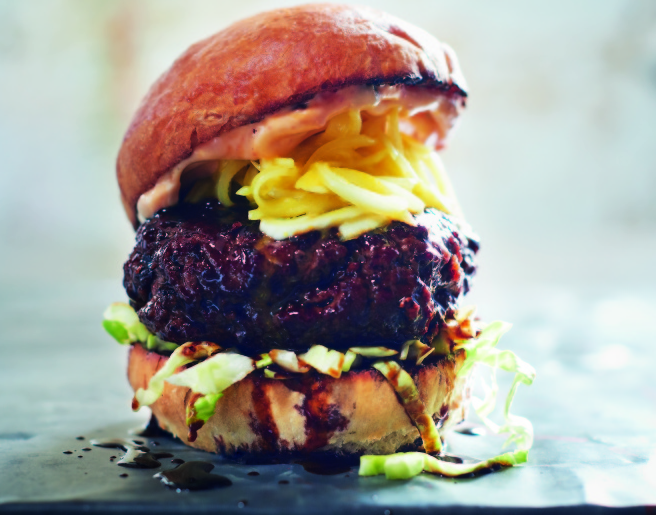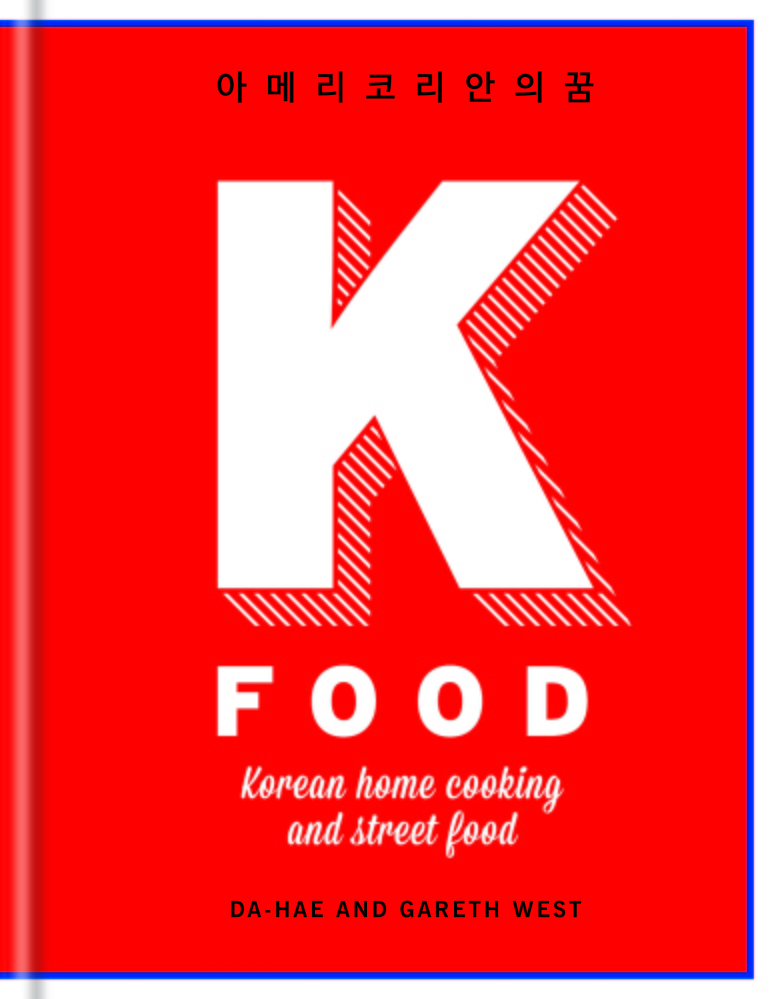“K Food: Korean Home Cooking and Street Food” by Da-Hae and Gareth West. Mitchell Beazley, $24.99
On first impression, “K Food” looks like a cookbook with a boldly Western take on Korean fusion food. It’s sprinkled with photos of Korean street scenes and markets, wrapped in blue and red geometric designs, and filled with recipes like Kimchi Mac ‘n’ Cheese or K-fries, french fries topped with bulgogi beef, kimchi, pickled chiles and sour cream. The subtitle, “Korean home cooking and street food,” seemed a bit off point.
But, as Gareth and Da-Hae West tell it, their cookbook is reflective of the new Korean food, evolved to suit the many Korean migrants who moved across the globe in the late 20th century, often traveling back to their homeland – or that of their parents or grandparents – again and again, carrying with them the food traditions of their ancestors and of their acquired homes.
These recipes don’t simply borrow the bold flavors of Korean food for dishes that please the sometimes blander palettes of eaters in America or in the U.K. The Wests present very traditional Korean dishes alongside recipes that have become newly popular in Korea and more that they’ve dreamed up themselves, inspired by changes in the country where Da-Hae was born.
While honeymooning in Korea, she introduced her husband to a fast-food staple in Korea: the bulgogi burger. A standard beef patty, that American food icon, is marinated in the sweet and tangy flavors of traditional Korean BBQ.
Back home in the U.K., the couple started developing a recipe for their own bulgogi burger. The idea for their Korean food trailer company, Busan BBQ, was born when they hit on something so delicious that Gareth West ate three burgers in one sitting, the story goes.
It’s easy to see why. After the patty is cooked and just before it goes on the bun, the burger is dipped in a traditional marinade of soy sauce, sesame oil, ginger, garlic, sugar and fruit juice (Asian pear juice is typical but here they use apple juice). Thickened slightly, the sauce soaks into the bun enough to be delicious but not soggy.
For even more flavor, the burger is topped with onions quick-pickled in a mustard brine and with Ssamjang Mayo.
Ssamjang is a loose paste that is sweet and spicy, typically used to add a kick to barbecued meats wrapped in lettuce leaves with rice and other toppings (“ssam” meaning “wrap”).
The Wests note that the sauce also makes a good dipping sauce for raw vegetables. Mixed with mayo – not a traditional Korean ingredient – it is especially versatile. The spread takes a plain, old turkey sandwich to a whole new level.
Recipes for common Korean dishes (mandu, japchae, ramyun) are included in about equal measure as the more fanciful ones (Corn on the Cob with Kimchi Butter, Yuja Cheesecake, Kimchi Bloody Mary).
The Wests’ kimchi jjiggae, a stew made with “extra-mature” cabbage kimchi and pork belly, is simple and delicious.
They also include a list of essential Korean ingredients, starting with “jang,” pastes or sauce made from fermented soybeans.
Most of the ingredients – including gochujang, a red chile paste – can be found in a traditional grocery store. The rest almost certainly can be found at one of Portland’s Asian markets.
SSAMJANG MAYO
Makes about 1 cup
1 tablespoon doenjang (Korean soybean paste)
1 tablespoon gochujang (Korean red chile paste)
1/2 a scallion, trimmed and finely chopped
2 garlic cloves, minced
1 1/2 teaspoons sesame oil
1 teaspoon sesame seeds
1 cup mayonnaise
Put the doenjang, gochujang, scallion, garlic, 1 teaspoon sesame oil and sesame seeds in a bowl and mix together well, to make the ssamjang.
Reserve all but 2 teaspoons for another occasion.
In a bowl, mix the 2 teaspoons of Ssamjang with the mayonnaise and the remaining 1/2 teaspoon sesame oil.
Serve or keep refrigerated for up to 3 days.
Send questions/comments to the editors.




Comments are no longer available on this story